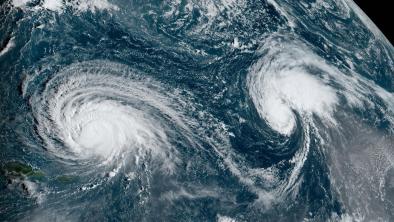Science Source
Past and Future Hurricane Intensity Change along the U.S. East Coast
- States that the ocean and atmosphere in the North Atlantic are coupled through a feedback mechanism that excites a dipole pattern in vertical wind shear (VWS), a metric that strongly controls Atlantic hurricanes
- States that when tropical VWS is under the weakening phase and thus favorable for increased hurricane activity in the Main Development Region (MDR), a protective barrier of high VWS inhibits hurricane intensification along the U.S. East Coast
- This paper shows how this pattern is driven mostly by natural decadal variability, but that greenhouse gas (GHG) forcing erodes the pattern and degrades the natural barrier along the U.S. coast
- Twenty-first century climate model projections show that the increased VWS along the U.S. East Coast during decadal periods of enhanced hurricane activity is substantially reduced by GHG forcing, which allows hurricanes approaching the U.S. coast to intensify more rapidly
- Finds that the erosion of this natural intensification barrier is especially large following the Representative Concentration Pathway 8.5 (rcp8.5) emission scenario
Related Content
Science Source
| Scientific Reports
Observed increases in North Atlantic tropical cyclone peak intensification rates
Andra J. Garner
Headline

Oct 23, 2023 | Climate Nexus Hot News
Atlantic Hurricanes Get Stronger, Quicker
Headline

Sep 12, 2023 | Climate Nexus Hot News
Record 23 Billion-Dollar Disasters in 2023, With Four Months To Go
Headline

Sep 8, 2023 | Climate Nexus Hot News
Hurricane Lee Strengthens To Cat 5 Monster In 18 Hours


